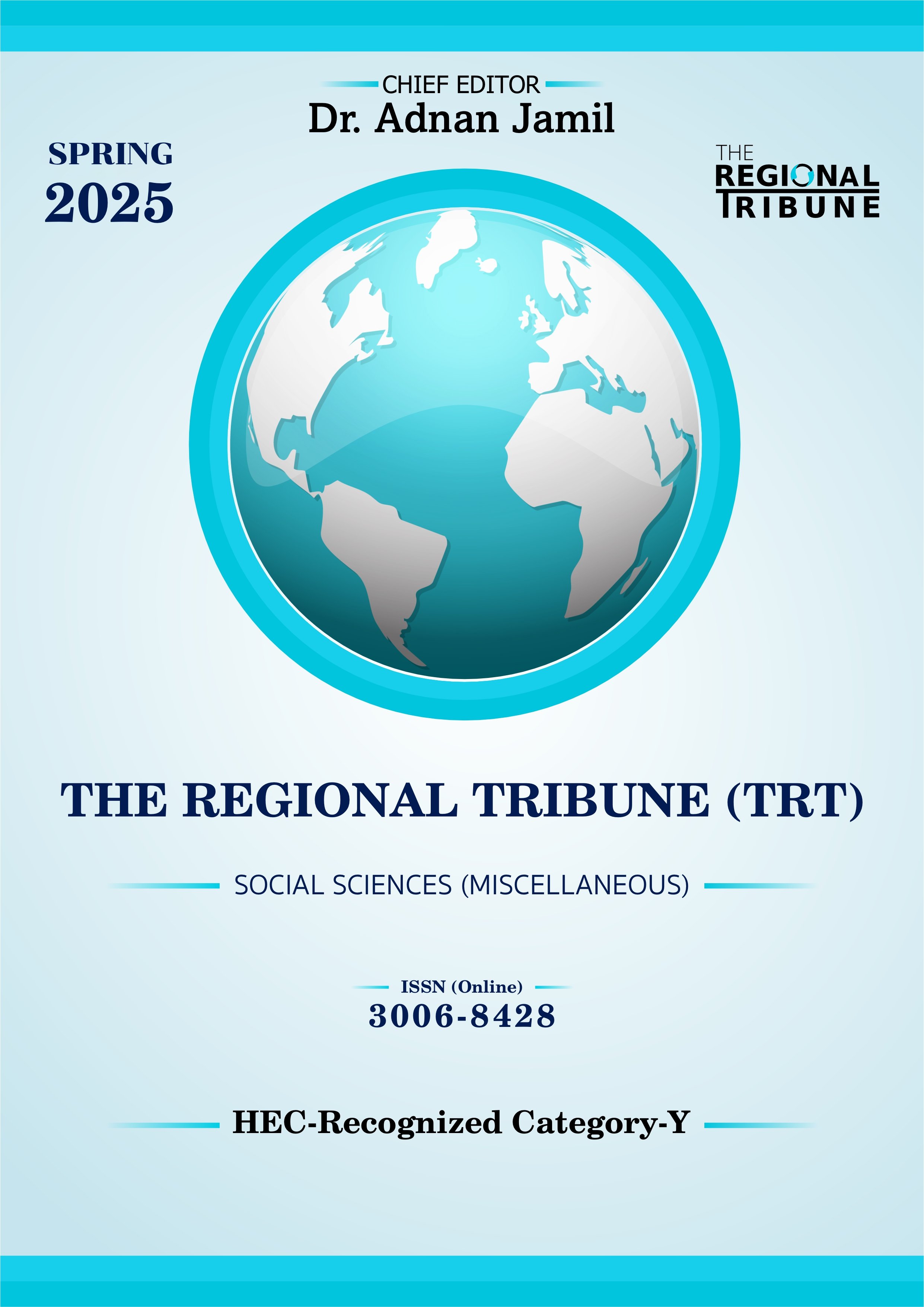The Effect of Brand Experience on Brand Loyalty: Mediating Role of Brand Attachment: An Empirical Study on Apparel Industry
DOI:
https://doi.org/10.55737/trt/SG25.109Keywords:
Brand Experience, Brand Attachment, Brand Loyalty, Customers, PakistanAbstract
A positive and satisfying brand experience plays a key role in creating emotionally attachment between the customer and the brand, which increase customer loyalty with that particular brand. This research was conducted to investigate the impact of brand experience on brand loyalty with mediating role of brand attachment. Quantitative approach was used for this study. Data were collected through survey questionnaire. Data were collected from 204 respondents of apparel brands users in Pakistan. Findings of this research shows that there is significant relationship between brand experience and brand loyalty. Results also indicates that brand attachment plays a mediating role between the relationship of brand experience and brand loyalty. For marketers and managers, this framework will encourage the managers to develop that kind of products and services which makes consumption experience positive and satisfying. By providing satisfying brand experience managers will be able to emotionally attach customers with their brands which leads customer towards brand loyalty.
References
Ambler, T., Bhattacharya, C. B., Edell, J., Keller, K. L., Lemon, K. N., & Mittal, V. (2002). Relating brand and customer perspectives on marketing management. Journal of Service Research, 5(1), 13-25. http://dx.doi.org/10.1177/1094670502005001003
Assael, H. (1998). Customer behavior and marketing action. Boston Masachusetts: PWS-Kelling.
Barnes, S. J., Mattsson, J., & Sørensen, F. (2014). Destination brand experience and visitor behavior: Testing a scale in the tourism context. Annals of Tourism Research, 48, 121–139. https://doi.org/10.1016/j.annals.2014.06.002
Beckman, E., Kumar, A., & Kim, Y.-K. (2013). The impact of brand experience on downtown success. Journal of Travel Research, 52(5), 646–658. https://doi.org/10.1177/0047287513478502
Brakus, J. J., Schmitt, B. H., & Zarantonello, L. (2009). Brand Experience: What is It? How is it Measured? Does it Affect Loyalty? Journal of Marketing, 73(3), 52–68. https://doi.org/10.1509/jmkg.73.3.052
Brun, A., & Castelli, C. (2008). Supply chain strategy in the fashion industry: Developing a portfolio model depending on product, retail channel and brand. International Journal of Production Economics, 116(2), 169–181. https://doi.org/10.1016/j.ijpe.2008.09.011
Brunk, K. H. (2012). Un/ethical company and brand perceptions: Conceptualising and operationalising consumer meanings. Journal of Business Ethics, 111(4), 551–565. https://doi.org/10.1007/s10551-012-1339-x
Cailleux, H., Mignot, C., & Kapferer, J.-N. (2009). Is CRM for luxury brands? Journal of Brand Management, 16(5–6), 406–412. https://doi.org/10.1057/bm.2008.50
Casidy, R. (2013). The role of brand orientation in the higher education sector: a student-perceived paradigm. Asia Pacific Journal of Marketing and Logistics, 25(5), 803-820. https://doi.org/10.1108/APJML-06-2013-0069
Chang, H.-S., Chen, T.-Y., & Tseng, C.-M. (2008). How public-issue-promoted and revenue-related types of social marketing influence customer-perceived value in Taiwan’s banking industry. Journal of International Consumer Marketing, 21(1), 35–49. https://doi.org/10.1080/08961530802125308
Chaplin, L. N., & Roedder John, D. (2005). The development of self‐brand connections in children and adolescents. The Journal of Consumer Research, 32(1), 119–129. https://doi.org/10.1086/426622
Chaudhuri, A., & Holbrook, M. B. (2001). The chain of effects from brand trust and brand affect to brand performance: the role of brand loyalty. Journal of marketing, 65(2), 81-93. https://doi.org/10.1509/jmkg.65.2.81.18255
Dagger, T. S., & David, M. E. (2012). Uncovering the real effect of switching costs on the satisfaction‐loyalty association: The critical role of involvement and relationship benefits. European Journal of Marketing, 46(3/4), 447-468. https://doi.org/10.1108/03090561211202558
De Chernatony, L. (2010). From brand vision to brand evaluation. Routledge.
Ding, C. G., & Tseng, T. H. (2015). On the relationships among brand experience, hedonic emotions, and brand equity. European journal of marketing, 49(7/8), 994-1015. https://doi.org/10.1108/EJM-04-2013-0200
Drichoutis, A. C., Lazaridis, P., & Nayga, R. M., Jr. (2007). An assessment of product class involvement in food‐purchasing behavior. European Journal of Marketing, 41(7/8), 888–914. https://doi.org/10.1108/03090560710752447
Elbedweihy, A. M., Jayawardhena, C., Elsharnouby, M. H., & Elsharnouby, T. H. (2016). Customer relationship building: The role of brand attractiveness and consumer–brand identification. Journal of Business Research, 69(8), 2901–2910. https://doi.org/10.1016/j.jbusres.2015.12.059
Fournier, S. (1998). Consumers and their brands: Developing relationship theory in consumer research. The Journal of Consumer Research, 24(4), 343–353. https://doi.org/10.1086/209515
Francisco-Maffezzolli, E. C., Semprebon, E., & Muller Prado, P. H. (2014). Construing loyalty through brand experience: The mediating role of brand relationship quality. Journal of Brand Management, 21(5), 446–458. https://doi.org/10.1057/bm.2014.16
Ha, H.-Y., & Perks, H. (2005). Effects of consumer perceptions of brand experience on the web: brand familiarity, satisfaction and brand trust. Journal of Consumer Behaviour, 4(6), 438–452. https://doi.org/10.1002/cb.29
Kandampully, J., Zhang, T. (christina), & Bilgihan, A. (2015b). Customer loyalty: a review and future directions with a special focus on the hospitality industry. International Journal of Contemporary Hospitality Management, 27(3), 379–414. https://doi.org/10.1108/ijchm-03-2014-0151
Keller, K. L. (2009). Building strong brands in a modern marketing communications environment. Journal of Marketing Communications, 15(2–3), 139–155. https://doi.org/10.1080/13527260902757530
Kleine, S. S., & Baker, S. M. (2004). An integrative review of material possession attachment. Academy of marketing science review, 1(1), 1-39.
Laroche, M., Habibi, M. R., Richard, M.-O., & Sankaranarayanan, R. (2012). The effects of social media based brand communities on brand community markers, value creation practices, brand trust and brand loyalty. Computers in Human Behavior, 28(5), 1755–1767. https://doi.org/10.1016/j.chb.2012.04.016
Merrilees, B., &Merrilees, B. (2016). Interactive brand experience pathways to customer brand engagement and value co-creation. Journal of Product & Brand Management, 25(5), 402–408 http://dx.doi.org/10.1108/JPBM-04-2016-1151
Mohan, G., Sivakumaran, B., & Sharma, P. (2013). Impact of store environment on impulse buying behavior. European Journal of Marketing, 47(10), 1711–1732. https://doi.org/10.1108/ejm-03-2011-0110
Nunnally, J. C., & Bernstein, I. H. (1994). Psychometric theory (3rd ed.). New York, NY: McGraw-Hill.
Oliver, R. L. (2010). Satisfaction: A behavioral perspective on the consumer: ME Sharpe. Inc., New York.
Park, C. W., & MacInnis, D. J. (2006). What’s in and what’s out: Questions on the boundaries of the attitude construct. The Journal of Consumer Research, 33(1), 16–18. https://doi.org/10.1086/504122
Park, C. W., Macinnis, D. J., Priester, J., Eisingerich, A. B., & Iacobucci, D. (2010). Brand attachment and brand attitude strength: Conceptual and empirical differentiation of two critical brand equity drivers. Journal of Marketing, 74(6), 1–17. https://doi.org/10.1509/jmkg.74.6.1
Pine, B. J., & Gilmore, J. H. (2011). The experience economy. Harvard Business Press.
Reichheld, F. F. (1996). The quest for loyalty: creating value through partnership. Harvard Business Press.
Schmitt, B. (2009). The concept of brand experience. Journal of brand management, 16(7), 417-419. https://doi.org/10.1057/bm.2009.5
Sheth, J. N. (2011). Impact of emerging markets on marketing: Rethinking existing perspectives and practices. Journal of Marketing, 75(4), 166–182. https://doi.org/10.1509/jmkg.75.4.166
Shukla, P., & Purani, K. (2012). Comparing the importance of luxury value perceptions in cross-national contexts. Journal of Business Research, 65(10), 1417–1424. https://doi.org/10.1016/j.jbusres.2011.10.007
Tali, M. A., & Nautiyal, J. P. (2022). Effect of branding on consumer purchase decision. Int. J. All Res. Educ. Sci. Methods, 10, 2197-2201. https://www.ijaresm.com/effect-of-branding-on-consumer-purchase-decision
Thomson, M., MacInnis, D. J., & Whan Park, C. (2005). The ties that bind: Measuring the strength of consumers’ emotional attachments to brands. Journal of Consumer Psychology: The Official Journal of the Society for Consumer Psychology, 15(1), 77–91. https://doi.org/10.1207/s15327663jcp1501_10
Usman, A., & Nawaz, N. U. A. (2011). What makes customers brand loyal: A study on telecommunication sector of Pakistan. International journal of business and social science, 2(14).
Vlachos, P. A., Tsamakos, A., Vrechopoulos, A. P., & Avramidis, P. K. (2009). Corporate social responsibility: attributions, loyalty, and the mediating role of trust. Journal of the academy of marketing science, 37(2), 170-180. https://doi.org/10.1007/s11747-008-0117-x
Zarantonello, L., & Schmitt, B. H. (2010). Using the brand experience scale to profile consumers and predict consumer behaviour. Journal of Brand Management, 17(7), 532–540. https://doi.org/10.1057/bm.2010.4
Zarantonello, L., & Schmitt, B. H. (2013). The impact of event marketing on brand equity: The mediating roles of brand experience and brand attitude. International journal of advertising, 32(2), 255-280. https://doi.org/10.2501/IJA-32-2-255-280
Downloads
Published
Issue
Section
License

This work is licensed under a Creative Commons Attribution-NonCommercial 4.0 International License.



